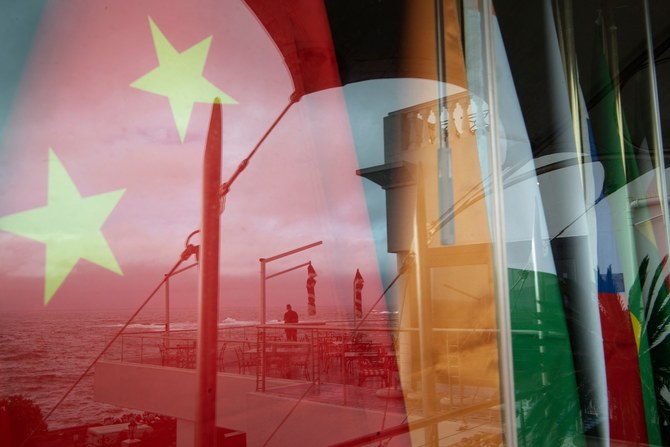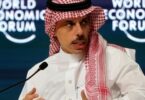Andrew Hammond
The concept of the Global South dates back to the late 1960s but use of the term has grown significantly in the past few decades, including in the aftermath of Russia’s invasion of Ukraine. Politically, many developing countries in the Global South do not perceive the conflict in Ukraine in the same stark moral terms as much of the West. Therefore many remain publicly unaligned, with a few key exceptions, including Singapore which has imposed sanctions on Russia.
For many countries in Africa, Asia the Middle East and Latin America, a decision to remain neutral in the conflict has significant appeal. A wide number of them depend heavily on trade, aid, investment and/or weaponry both from Western powers and from China, if not also from Russia itself. One of the economic consequences of Moscow’s invasion, and the pandemic, has been the stunting of growth in many of these developing nations. It is in this highly dynamic context that moves are afoot to bring about a greater organizational identity to the Global South. Certainly, there have long been forums available, such as the G77, a coalition of well over 100 developing countries that is designed to promote collective economic interests and create an enhanced joint negotiating capacity in the UN.
However, following the start of the war in Ukraine, efforts are also being expedited to expand the prestigious BRICS club (Brazil, Russia, India, China and South Africa) as well. The group’s latest summit is due to take place in the second half of August in South Africa, and the five-nation bloc plans to announce an expansion following about 22 formal requests for membership, and 20 informal ones, in recent times from other developing countries. These reportedly include Saudi Arabia, the UAE, Indonesia, Bangladesh, Argentina, Egypt, Iran, Cuba and Kazakhstan. While the existing members of BRICS appear to be in alignment on the group’s expansion in principle, there are in fact competing agendas around this core issue within the bloc. India, for example, wants strict rules on how and when other nations could move closer to the group, without formally enlarging it. Brazilian President Luiz Inacio Lula da Silva is reportedly cautious, too, given the possibility of alienating the US and EU. Of the five member nations, China is the one most in favor of a potentially rapid expansion of the bloc, partly for geopolitical reasons. Its goal is for an enlarged BRICS that becomes a Beijing-friendly hub, with China the leader of the bigger grouping.
While the origins of some other recently established emerging-market forums, such as the Shanghai Cooperation Organization, are based primarily in defense and security, economics drove the formation of BRICS. This reflects the fact that its five members now account for about a quarter of global gross domestic product, and more than 15 percent of world trade. Yet while the bloc was originally assembled to develop its economic potential, political cooperation has also come to the fore. This growing political bent is exemplified by South Africa’s presidency of the club of emerging-market powers this year, with an emphasis on expansion which, it is presumed, will allow members to better promote their interests abroad, strengthening positions that are sometimes ignored by their Western counterparts. This underlines the hunger of BRICS members to become even bigger political players, raising fears in some quarters that the bloc could, ultimately, become a unified anti-Western alliance. However, this is most unlikely in the immediate future, not least because of the differing views of China and India, including over border issues, which can adversely affect relations between the two. This has been one driver of the so-called anti-China Quad grouping, comprising India, the US, Japan and Australia.
At the same time that BRICS members are stepping up political cooperation, there is growing skepticism about the relevance of the group as an economic club, given the diverging long-term economic trajectories of the five nations. The generally robust economic performances of China and India over the past decade contrasts with disappointing results in Brazil, Russia and South Africa. The result is that the group is now unevenly balanced; China’s expected output of $19 trillion dollars in 2023 will be about 50 times that of South Africa, for example. Yet with BRICS nations already accounting for about a quarter of global GDP, up by more than 10 percentage points from about decade ago, their overall combined growth is already having a major global effect, despite their individually diverging fortunes.
Data shows that since around 2020, BRICS members as a whole have contributed more to global GDP than the G7 industrialized nations, in terms of purchasing power parity. The five developing countries are projected to further extend this lead over their seven industrialized counterparts over the rest of this decade. Moreover, World Bank research, for example, shows that for the first time in about two centuries, overall global income inequality between countries appears to be declining. This is being driven by BRICS, and specifically by the collective economic growth and very large populations of India and China. At the same time, however, there is an opposing force, which is the growing income inequality within many countries. This has assumed growing political salience, helping to fuel the rise of populist, nationalist politicians, including Brazil’s former president, Jair Bolsonaro. These countervailing pressures are pushing against each other. While the net global trend for the past two centuries has been toward greater overall income inequality, there has been growing evidence over the past two and a half decades that the “positive effect” of improved income equality between countries, spurred on by China and India, is superseding the “negative effect” of increasing inequality within nations.
While the coherence of BRICS as an economic club is therefore increasingly questioned, its members have helped drive a historic, sustained movement toward greater global income equality. However, this fragile process could yet go into reverse, post-pandemic, especially if growth in China and India plateaus significantly.







